The driver from Golden Messenger courier company couldn’t have known it, but on the night of August 14 five years ago he had a life in his hands.
Usually a parcels courier, the driver had been asked to collect a small Esky from Holmesglen private hospital in Moorabbin and drive it to a pathology lab in Wantirna. The Esky contained the blood sample of a young pregnant woman, Annie Moylan.
The courier followed the hospital’s instructions, unaware he had been directed to the wrong pathology lab. As a result of this misdirection, and a cascading series of other errors that followed, Moylan and her unborn child both died.
The sample showed she had contracted sepsis, a potentially lethal but treatable blood infection. But the results did not come back until 24 hours after Moylan had first gone to hospital, and six hours after her grief-stricken parents had agreed to switch off her life support. With early antibiotics, both she and the baby would most likely be alive today.
The mystery of how this could happen in 2017 in Melbourne, prompted Moylan’s parents, Brian, a former GP of 40 years, and Marg, a retired nurse, to investigate. Their daughter’s death left them taking on and exposing a private hospital system they feel was more concerned with protecting its profits than coming clean about its failures.
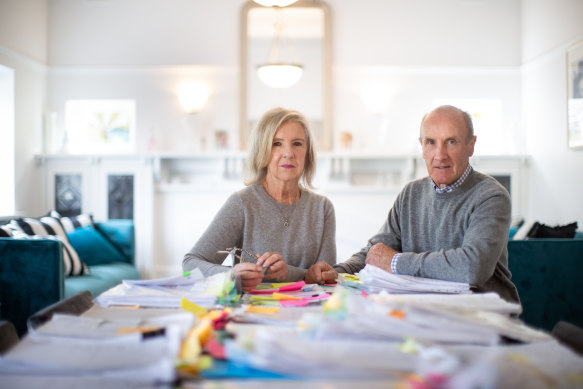
Marg and Brian Moylan and the mountain of paperwork they have amassed as they try to find out what happened to their daughter.Credit:Simon Schluter
“The only point of regulation is at registration and accreditation, and there appears to be very little in between,” Brian said. “It is a major risk to patient safety.”
He and Marg were initially told everything had been done to save their daughter’s life, and they believed it. At Annie’s funeral, they even praised the doctors. They no longer believe this to be the case.
“There has been a cover-up,” says Brian. “Information has been very hard for us to obtain.”
Marg says: “And we know that relevant information has been withheld.”
Glossy brochures
Antoinette Moylan, known to all as Annie, was a successful lawyer, a wife and the mother of a 14-month-old boy. But on that August night in 2017, at 37 years of age and 18 weeks pregnant, she started to feel unwell.
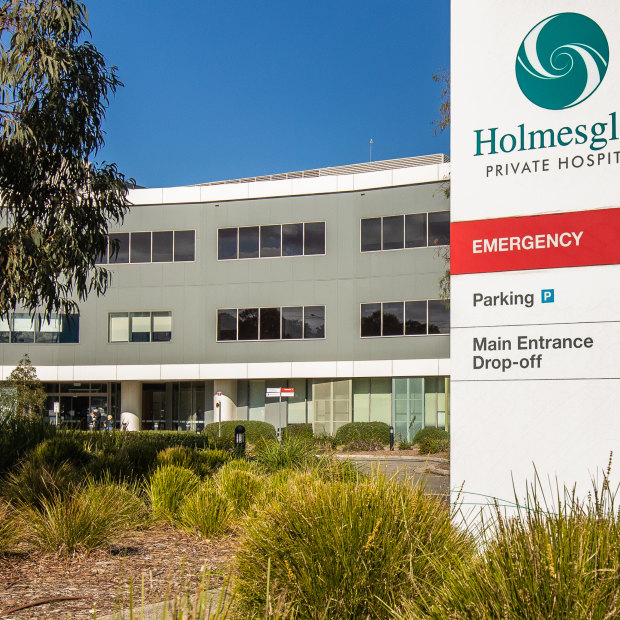
Holmesglen private hospial in Moorabbin.Credit:Scott McNaughton
A few months earlier, her father had received a visit at his GP practice from representatives of Holmesglen Private. They handed out glossy brochures as they spruiked their new hospital and its 24-hour emergency department, boasting it had “the latest technology and equipment”. The hospital had just been opened with much fanfare by then federal health minister Greg Hunt.
So, with Annie feeling increasingly unwell, Brian rang the hospital to check it could handle a pregnancy. He was assured it could.
At 7.27pm Annie arrived at the Holmesglen emergency department. Her symptoms were recorded as chills, sweating, a temperature of 40.3 degrees, elevated heart rate, vomiting and diarrhoea. The doctor saw Annie and diagnosed gastroenteritis. She was not given antibiotics. It was the first mistake.
In fact, Annie had the early signs of sepsis. It’s the body’s extreme response to an infection and can lead to organ failure and death if not treated early enough.
Professor Simon Finfer, a sepsis expert from the George Institute for Global Health in Sydney, says with those symptoms it would be “incredibly rare” to be anything but sepsis.
“I would be pretty certain they had got a bad infection,” Finfer says.
Even so, in all likelihood, antibiotics at this stage would have saved Annie’s life.
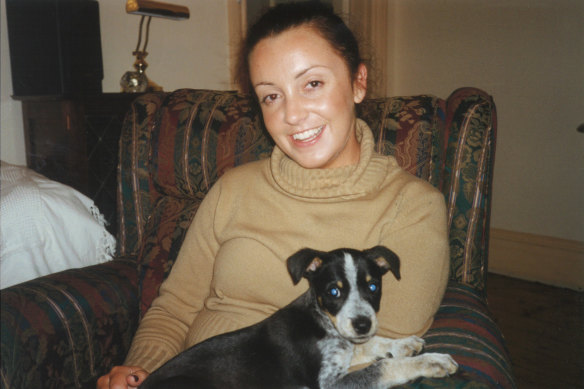
Annie Moylan.
“If someone has sepsis, clearly has sepsis, they should receive antibiotics as soon as possible, definitely within an hour. And if you’re unsure, then you give what we call a broad spectrum antibiotic which treats all possible causes; you can change that later,” Finfer says.
“A 37-year-old woman with no underlying health problems would have an excellent chance of survival if she was treated with antibiotics and other supportive care.”
Instead, Annie was given morphine because she was writhing in pain.
At 11.30pm Annie began to miscarry. Holmesglen then made the extraordinary decision to transfer her to St Vincent’s Private Hospital in Fitzroy.
Brian says: “It transpires that [Holmesglen] had no obstetricians on their staff or on call.”
Despite their assurances to him on the phone, “they weren’t equipped to deal with a pregnancy complication”.
“I feel rather deceived … and I feel somewhat responsible because I directed Annie to that hospital,” he says, his voice breaking. “I feel terrible about it, but that’s the reality.”
‘Urgent’ transfer
A nurse at Holmesglen called triple zero requesting an urgent ambulance, and a call was put through to St Vincent’s Private in Fitzroy, and Annie’s obstetrician.
In records seen by The Age and 60 Minutes, Holmesglen says they were assured that Annie’s obstetrician would be waiting for her at St Vincent’s. When paramedics arrived to pick her up, they saw Annie was critically ill. They sped across the city under lights and sirens to St Vincent’s Private.
Annie arrived just after midnight. As a patient needing urgent medical intervention, she had been designated a critical-one urgent transfer, as paramedics describe it. But no one was there to meet them in the ambulance bay. The paramedics had to wheel Annie, who was in immense pain and miscarrying, through the front entrance and to the reception desk on a stretcher.
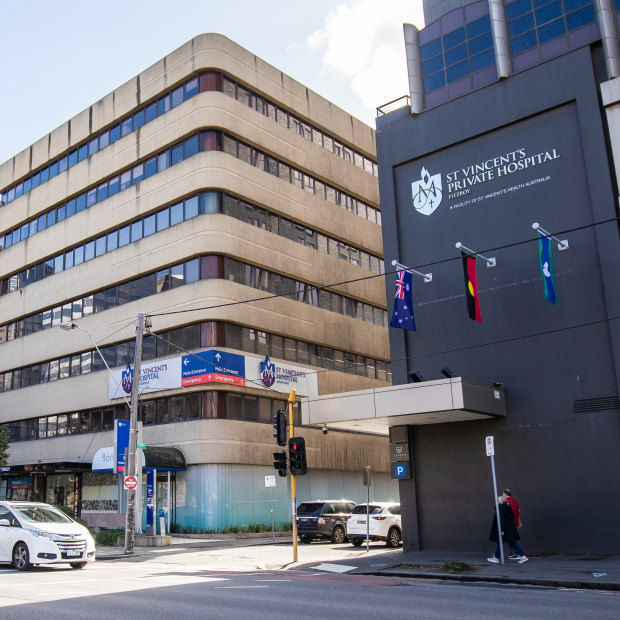
St Vincent’s Private Hospital in Fitzroy.Credit:Scott McNaughton
“I relive that night all the time,” Marg says. “You’d wonder how frightened she would have felt. We can see it in the notes we obtained from Ambulance Victoria. She was distressed at being wheeled to a front reception desk, and they didn’t know where to take her.”
Professor John Wilson, was a senior doctor at The Alfred hospital for 30 years, and has never heard of such a scenario.
“I don’t think I can imagine a situation where the medical staff would not be aware of the serious nature of the presentation,” he says.
Missing truths
There would be many more failures in Annie’s last hours. After being taken to a labour ward, Annie was not seen by a doctor for another hour and 16 minutes. In an internal review conducted by St Vincent’s Private, it is claimed the hospital was not aware the patient was arriving as a critical-one transfer, so Annie waited in pain. The patient notes show she was distressed and buzzing for help.
“The truth is missing somewhere,” says Brian. “We can’t determine who told the ambulance officers that the obstetrician was waiting, but it’s there in the record. And then the obstetrician wasn’t waiting.”
Under Ambulance Victoria’s guidelines, Annie should have been taken to a hospital with an emergency department that has obstetric capabilities, not St Vincent’s Private. The Ambulance Victoria review says the reason the paramedics went against their own guidelines was because they were told the obstetrician would be waiting. Ambulance Victoria declined to comment for this story.
Brian arrived at St Vincent’s, but had no idea how catastrophic the situation was because at this point, Annie still had not been properly diagnosed.
“She said, ‘Dad, go home – you’ve got work in the morning,’” Brian says.
They were her last words to him.
Annie was running out of time but, Professor Finfer says, given she was conscious and talking at this point, she still could have been saved.
“The earlier someone gets the antibiotics and the less organ dysfunction or failure they have at the time you administer treatment, the better their chances of survival are,” he says.
At 1.32am, the obstetrician finally saw Annie. St Vincent’s internal review claims she diagnosed sepsis immediately, but still, it was more than an hour before Annie was given antibiotics. By then it was too late. Annie had lost the baby and was in multi-organ failure. She was put on life support and her family was called to the hospital to say goodbye.
On August 15, at 1.55pm, Annie was taken off life support. The cause of death: sepsis.
St Vincent’s Health Australia offered its “sincere and deep condolences”, and said it would not “pre-empt or complicate” the findings of a pending coronial inquest by commenting publicly.
“In response to [Annie’s] death and the family’s wishes, we have made several practical changes at St Vincent’s Private Hospital Fitzroy,” the statement said, adding that the hospital would accept in full all findings of the coroner.
In a statement, a spokesman from Holmesglen owner Healthscope acknowledged Annie’s was “a tragic case”, but said it was “unable to discuss an individual patient’s condition or treatment”. The organisation’s treatment protocols are regularly reviewed, the statement said, adding Healthscope would participate in the coronial process.
Where is the blood test?
The cascade of errors began at Holmesglen, but was only slowly unveiled as Brian and Marg picked away at the medical system’s defences.
They found that when Annie was first admitted to Holmesglen, blood cultures – a crucial test for bacteria in the blood – were ordered. The hospital’s brochures advertised onsite pathology but failed to mention that the lab shut at 5pm, so Annie’s blood cultures had to be taken offsite for analysis by Australian Clinical Labs (ACL).
But instead of calling a specialised pathology courier, Holmesglen called Golden Messenger, a parcel service. The courier collected Annie’s samples at either 8.04pm or 9.08pm. ACL can’t determine which, even though as part of its registration it is required to trace blood samples at all times.
Instead of heading straight to ACL’s Clayton lab, where blood cultures are analysed, the samples were taken to another ACL lab in Wantirna, 17 kilometres away. And there they sat overnight. Finally, the next morning they were driven back to Clayton, arriving at 10.08am. For “reasons that are still unclear”, according to an ACL internal review, the samples were not analysed until nearly six hours later, at 3.55pm. Annie had been dead for two hours.
Marg says she and Brian “just melted” when they found out.
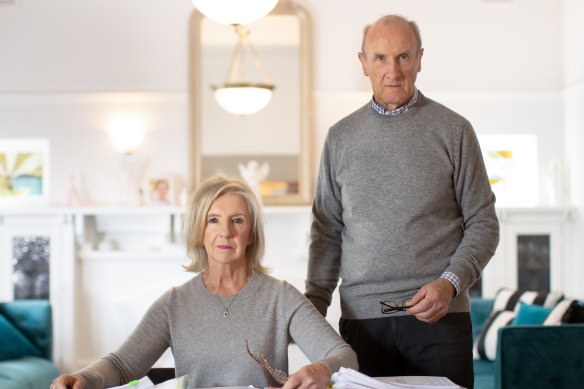
Marg and Brian Moylan: Only their doggedness has revealed what happened to their daughter.Credit:Simon Schluter
The blood test showed the early signs of sepsis. Had the system worked, Holmesglen doctors could have known at midnight that Annie needed antibiotics. A spokesperson for ACL said it would not comment as the coronial inquest was pending.
“It made you doubt,” says Marg, “and doubt always leads to lots of questions. We knew we needed to examine the records from the hospital.”
But when the Moylans asked for Annie’s patient records, St Vincent’s left out notes written by a nurse who looked after her when she arrived. That nurse was traumatised by the events of that night and has since left the profession. She will give evidence at the upcoming coronial inquest and is unwilling to speak publicly before then.
The doctor who switched off Annie’s life support also gave the Moylans her number at the time, so she could answer any questions they had about Annie’s care.
“I tried to contact this specialist over three days,” says Brian. “I’d say eight or 10 times, leaving messages, ringing her mobile, ringing her workplace. To this day, I’ve had no response.”
Doctors reviewing themselves
The state government promised the Moylans a thorough review through a Safer Care Victoria investigation. Jill Hennessy, the health minister at the time, wrote to the Moylans in January 2018.
Holmesglen, St Vincent’s Private and ACL all promised the Moylans they would co-operate fully with the review, but none of them handed over their primary records because they were not compelled to do so. Instead, the hospitals and the lab investigated themselves and handed over their own findings. Holmesglen included on its review panel the doctor who treated Annie that night. The Safer Care report says this is “not in line with recommended practice in incident investigation in health care”.
Premier Daniel Andrews said he was not aware of any problem with the review process, adding last week: “My expectation and experience is if [Safer Care Victoria] needed further powers or resources, then they would come forward and seek that.” He expressed “deepest sympathy to the family”.
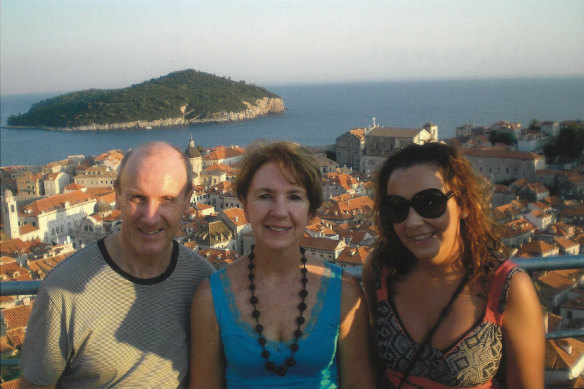
Annie with her parents, Brian and Marg.
The Moylans went all the way to the Australian Commission on Safety and Quality in Health Care, the body that sets the standards every hospital in Australia must comply with to be registered.
The chief medical officer of the commission at the time, Dr Robert Herkes, provided what he called a “genuine apology” to the Moylans, but no action was taken against either hospital. The commission declined a request for an interview. The Australian Health Practitioner Regulation Agency won’t confirm or deny whether the two primary doctors involved in Annie’s care have been investigated.
In 2016, according to a state government review, Targeting Zero, just seven bureaucrats were responsible for the oversight of 171 private hospitals in Victoria. The Department of Health won’t say whether that has changed.
Wilson believes that is inadequate. “One would guess that that would be well short of the mark to be able to assess performance in a large number of private hospitals, and particularly when the private hospitals themselves become responsible for governance,” he says. “We are relying on them to be good citizens.
“Private hospitals do not appear to be under the same regulation and same stringency as public hospitals.”
Andrews said he had no advice to say private hospitals were not appropriately regulated.
As of July 2018, private and public hospitals are compelled to report what is known as “sentinel events” to Safer Care Victoria. Broadly, these are adverse patient events that could have been avoided which resulted in serious harm or death. But hospitals and other agencies still don’t have to participate in a government review; they are only told that they should.
The Moylans say this change is not enough.
It has taken five years and a mountain of paperwork for the Moylans to uncover some of the truth about what happened to Annie, and to reveal a health system in crisis well before COVID-19. But it has taken a toll.
“It’s the cruellest thing for any parent to have to relive the events of that night over and over and over again,” says Marg.
Annie’s case will be examined in a coronial inquest beginning on August 15. But the crucial pathology issues will not be included in the scope of the inquest, which has disappointed the Moylans.
Loading
They are now helping to drive a new program designed to assist doctors in hospitals around the country in diagnosing sepsis.
But it’s only the beginning. They have bought a motorhome – which now has “Annie” written above the windshield in big bold letters – to drive around the country using their story to advocate for change. They say they won’t rest until there is an overhaul of how private hospitals are regulated in Victoria and across Australia.
“The distressing part is that there seems to be no will to fix the situation,” says Brian. “Will we see it change? I don’t know. I hope so. We’re desperate for change; we want a safe system.”
Marg says: “Annie is just beating away. That is what’s kept us going. Annie is in front and we’re behind. She’s driving it.”
To watch the 60 Minutes program head to 9Now.
